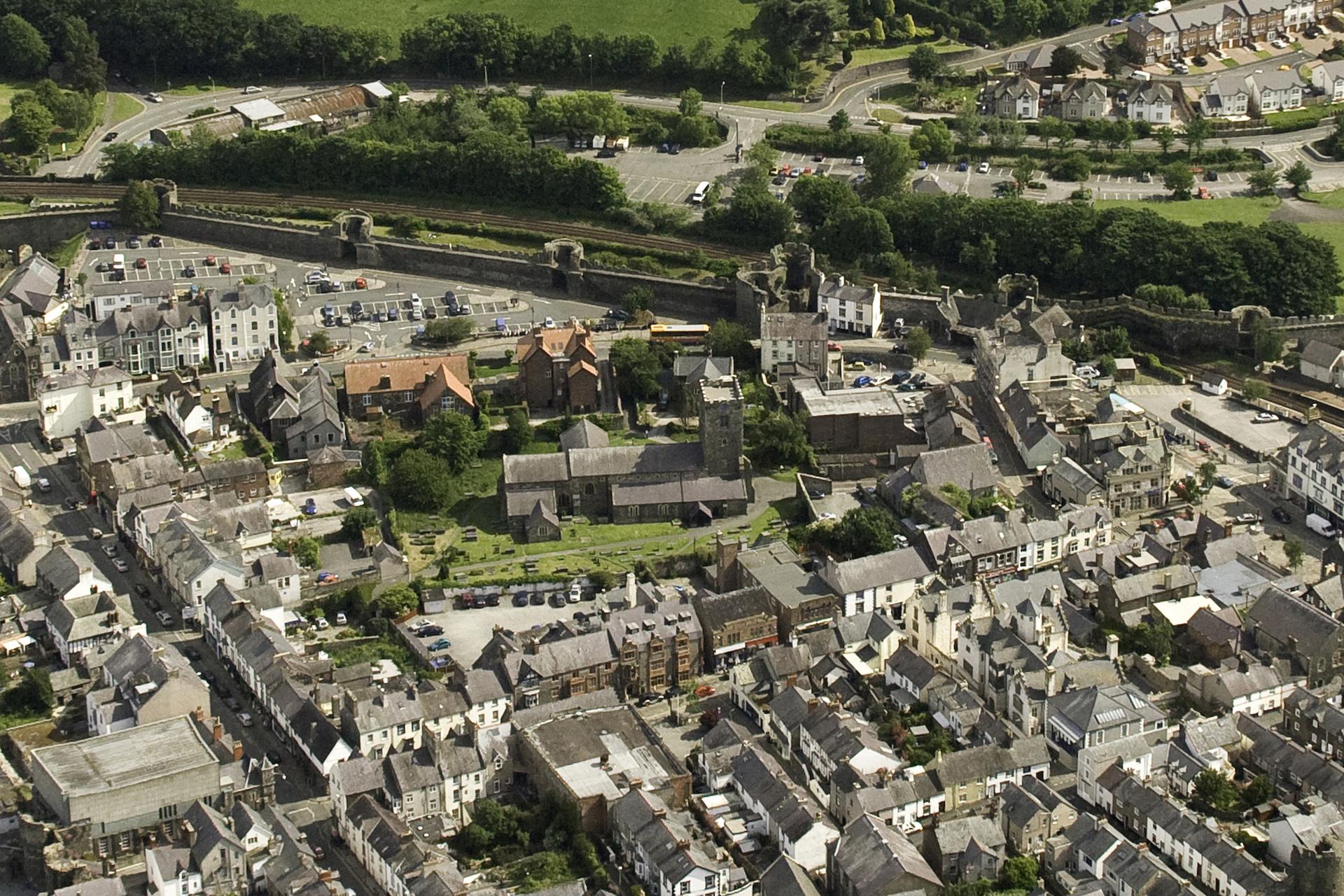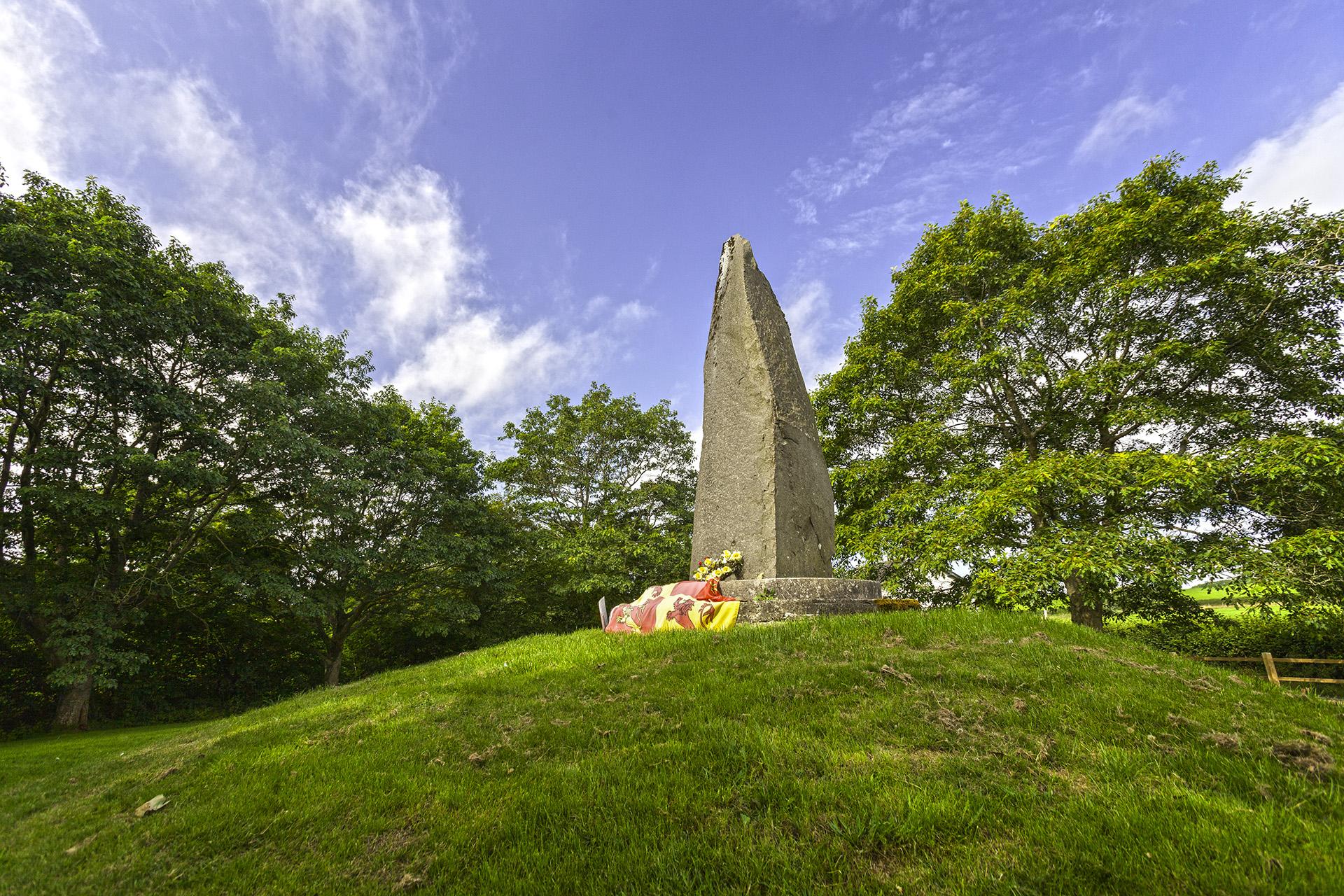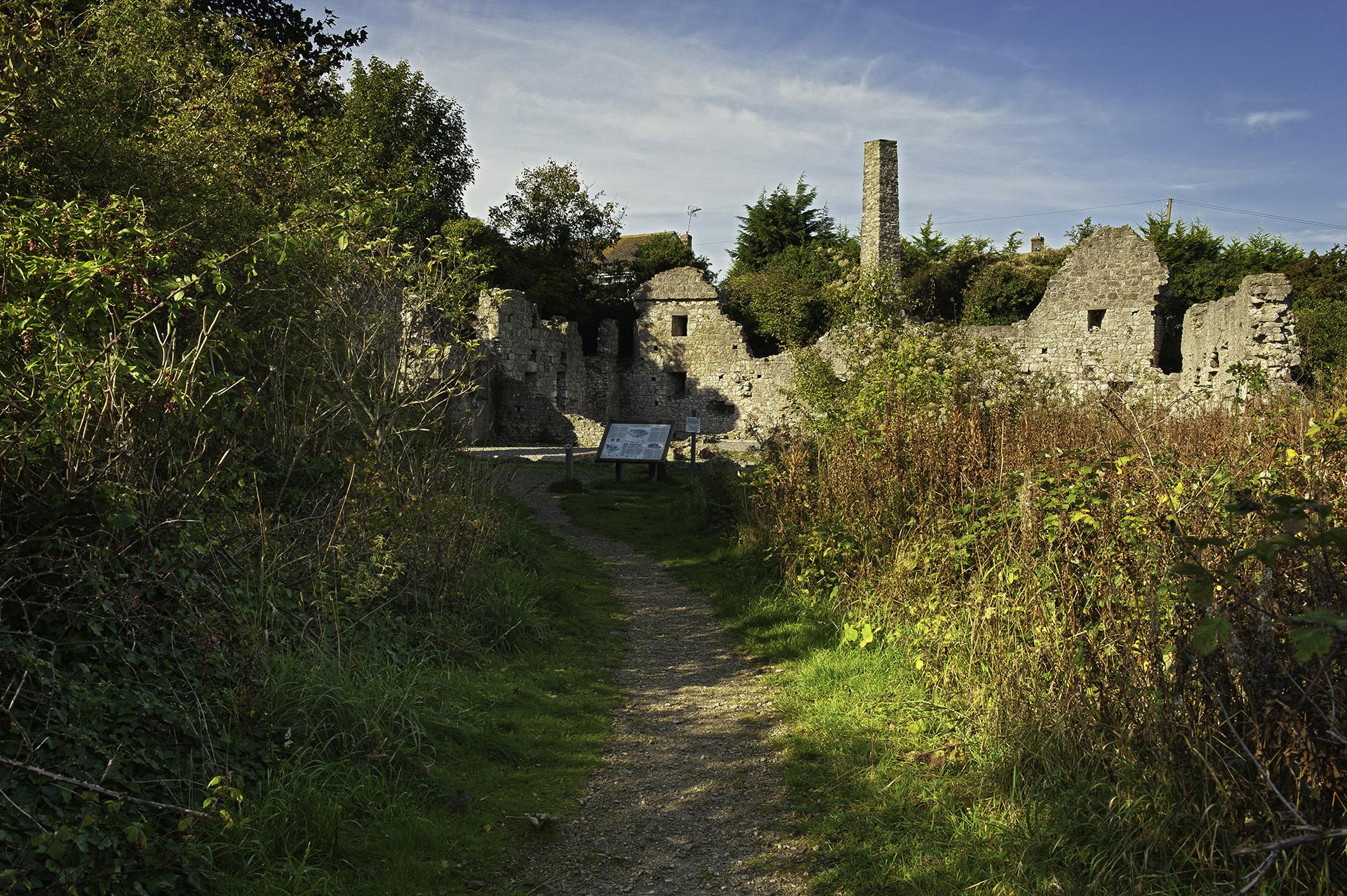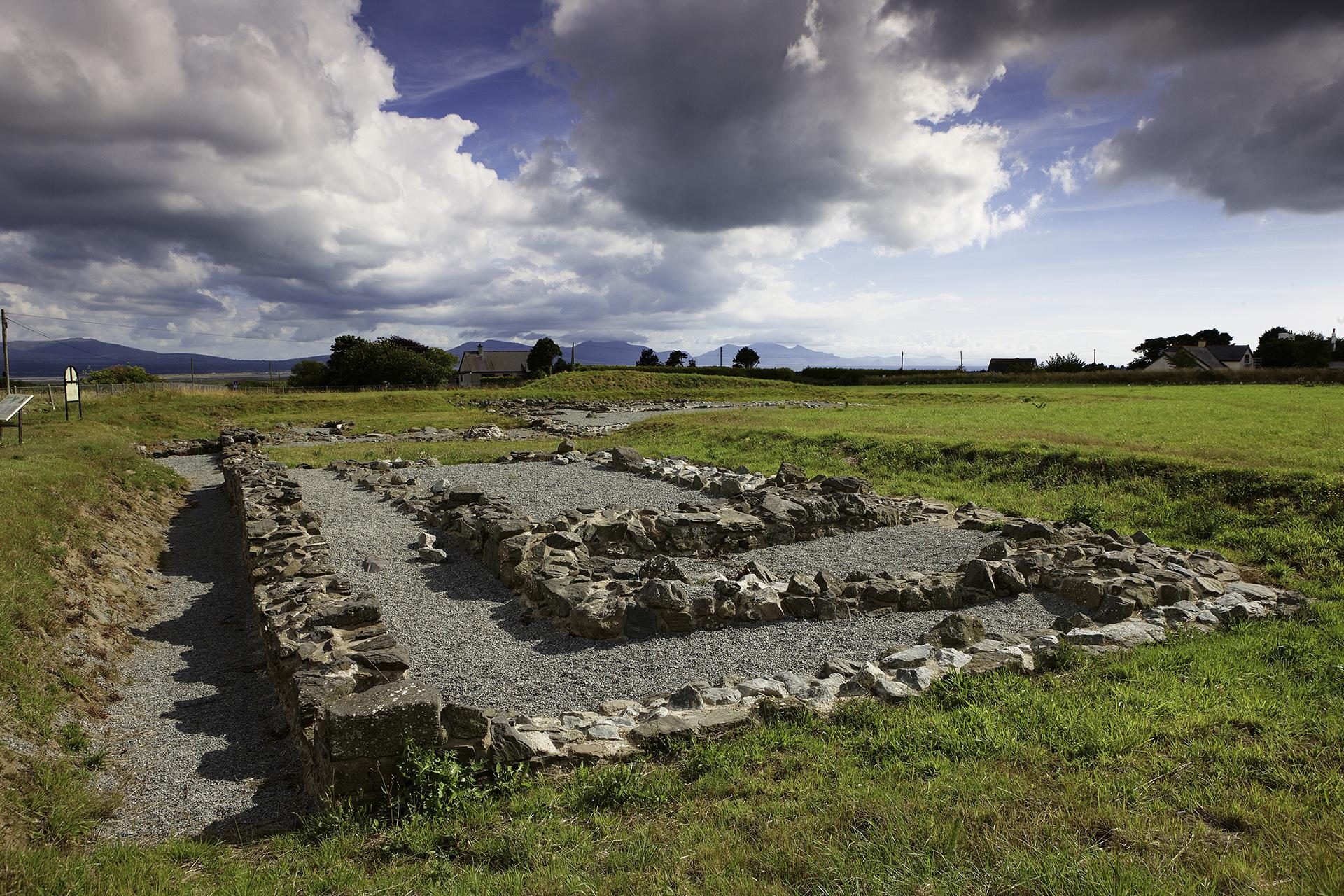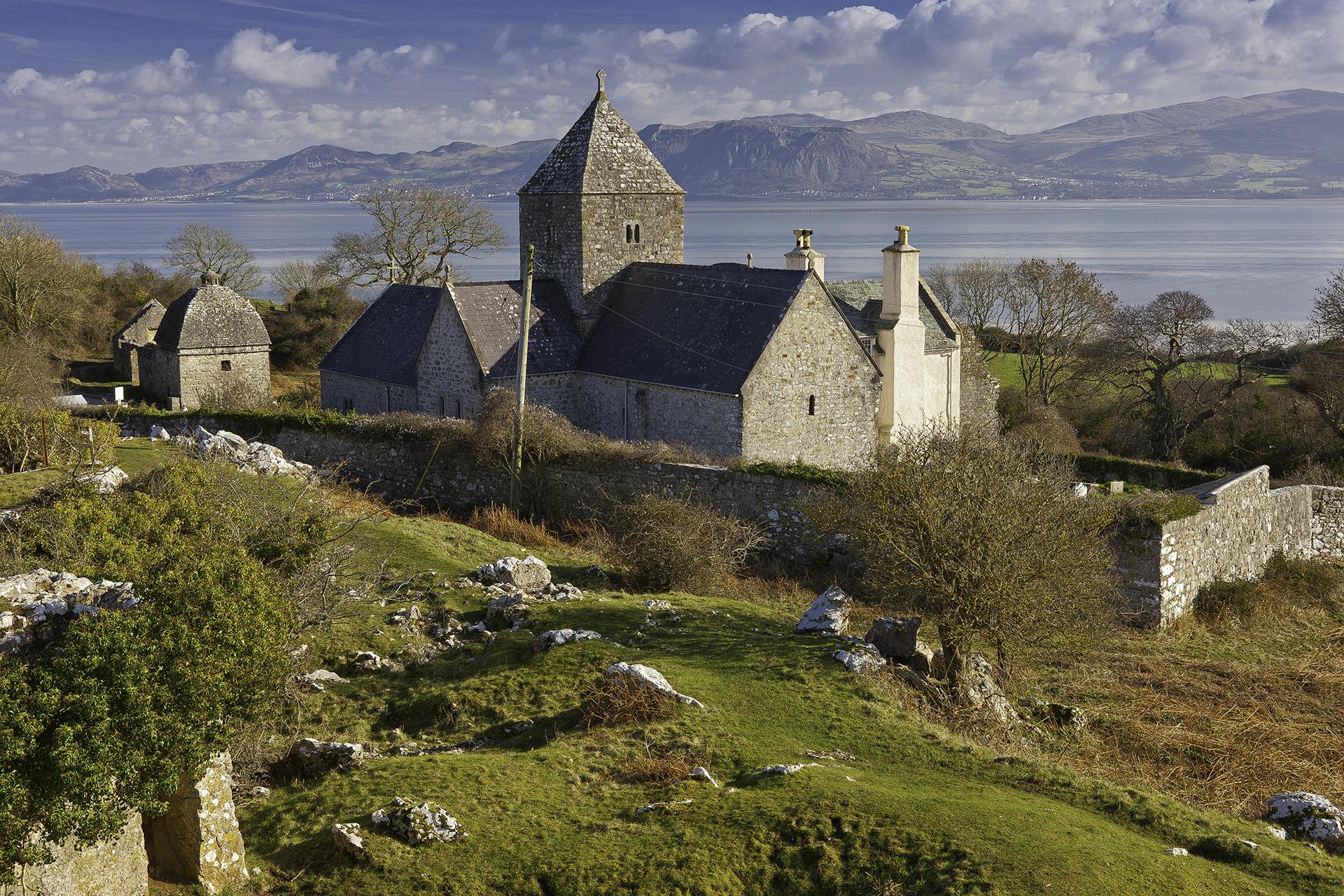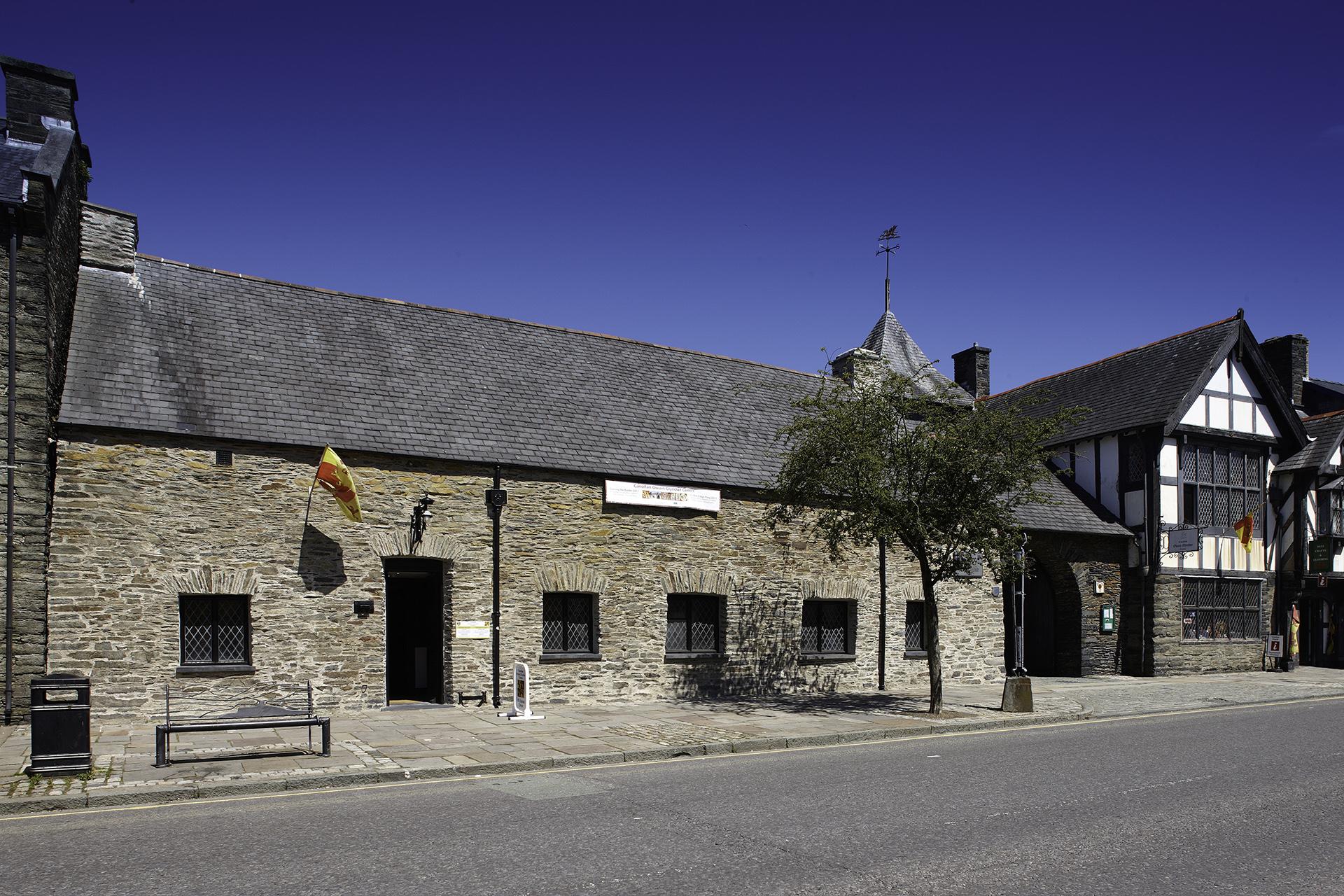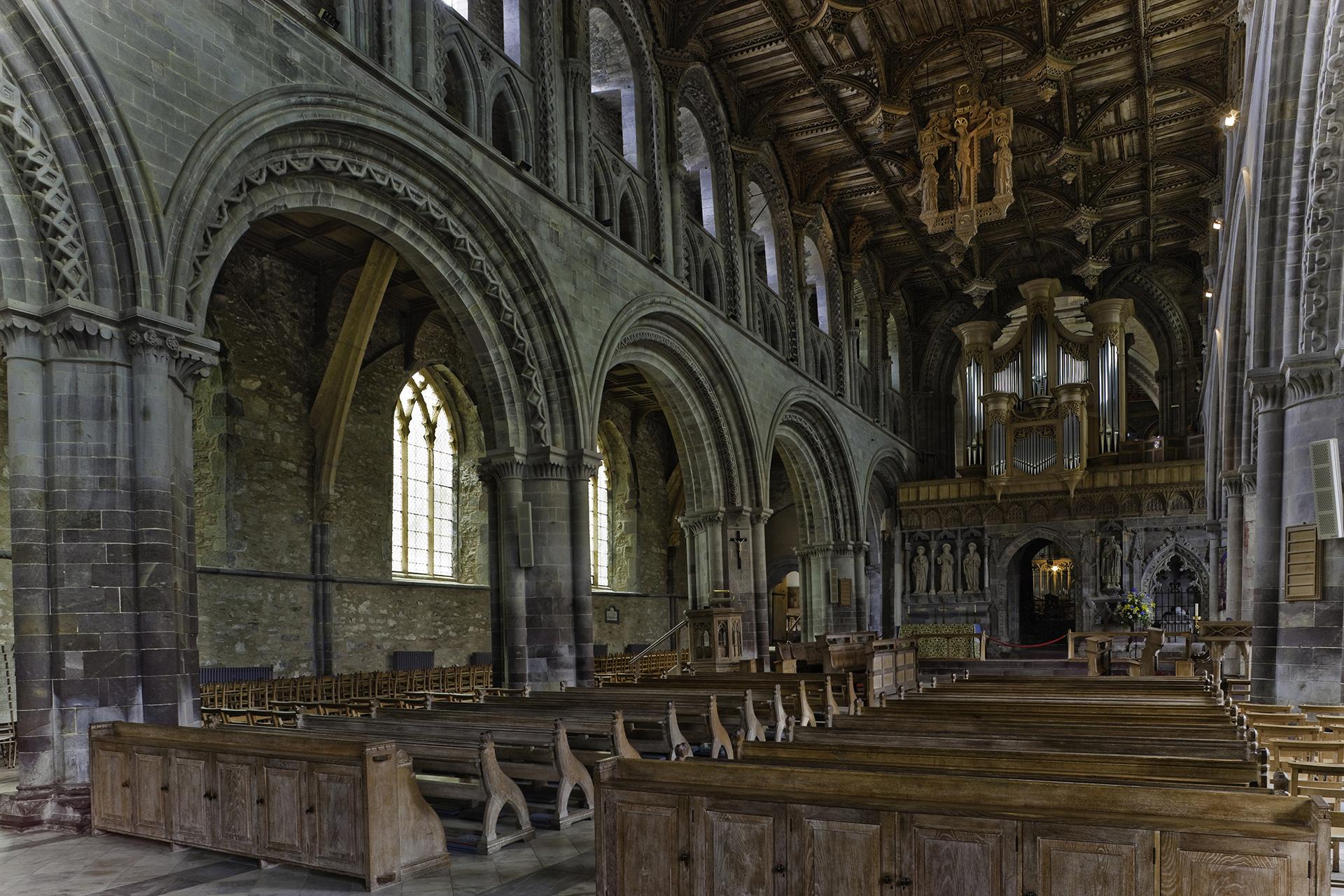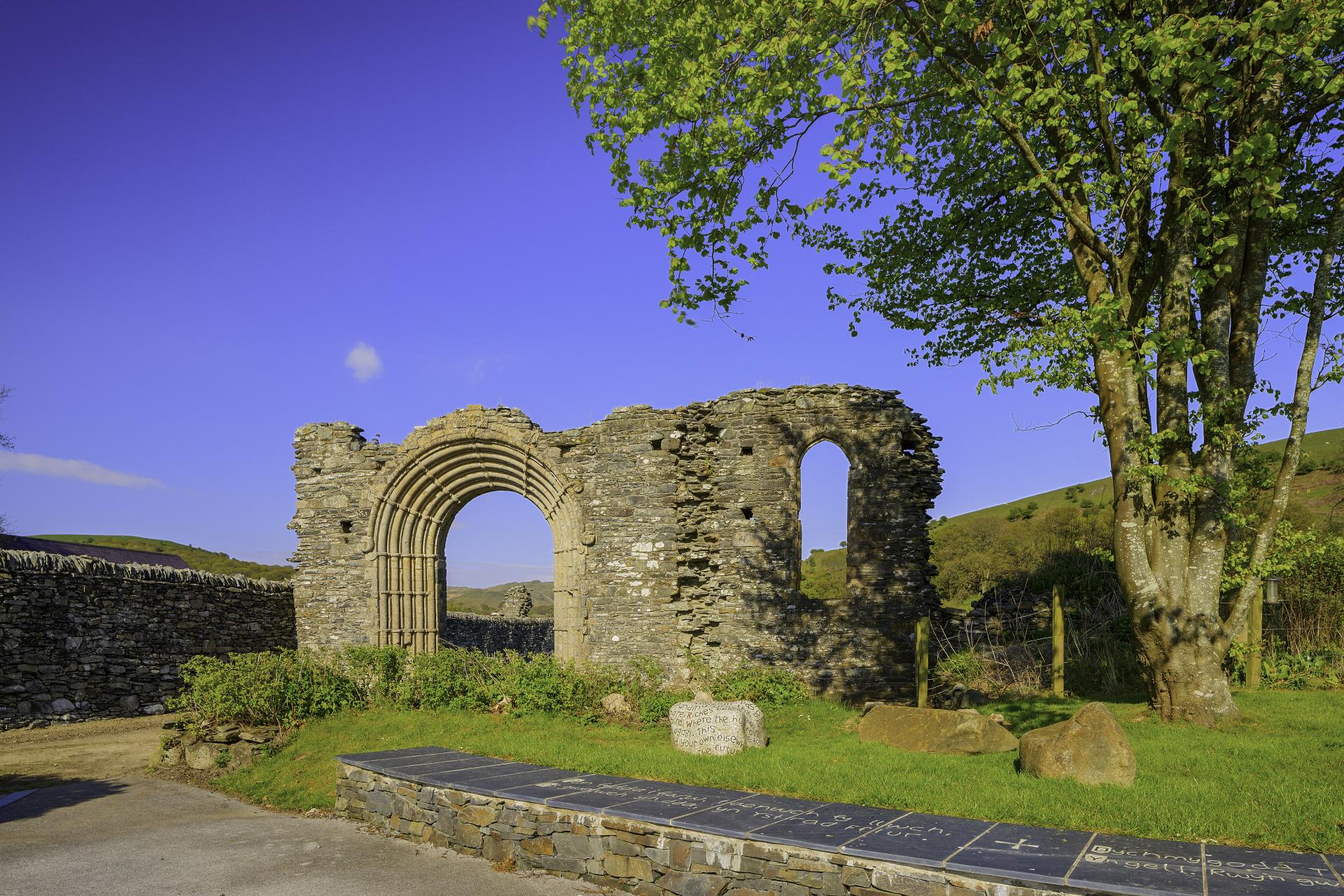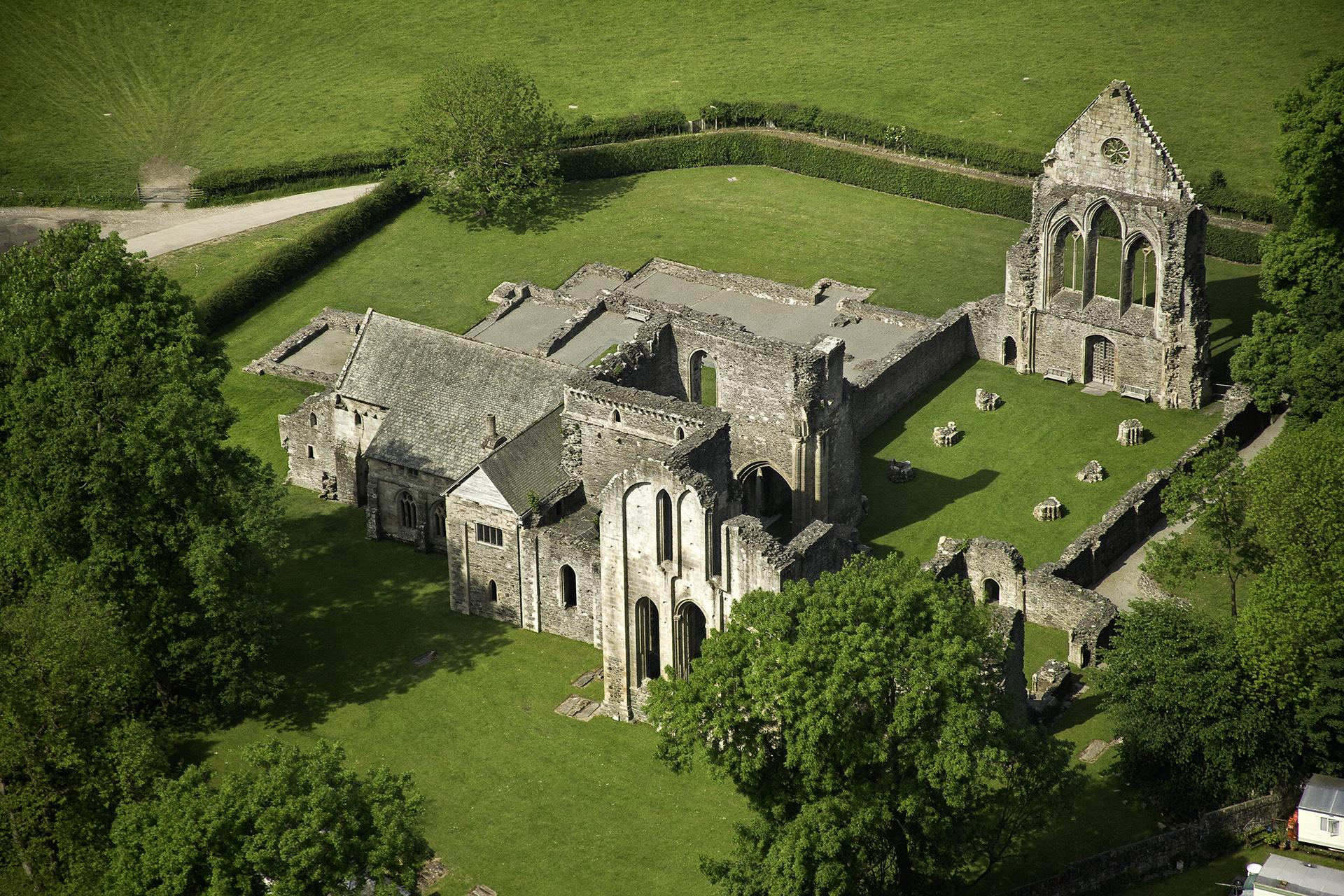Castles of the Lords and Princes of Wales
Download the booklet for a general introduction to the castles closely associated with the Welsh lords and princes.
Other sites associated with the Lords and Princes of Wales:
This Cistercian abbey, a daughter house of Whitland Abbey, dates to the mid-twelfth century. It underwent an extensive building programme during the thirteenth century with the support of Prince Llywelyn ap Iorwerth, but was never completed. It is reputed to be the final resting place of Prince Llywelyn ap Gruffudd following his death at Cilmeri in 1282.
Before Edward I’s ‘planted’ town was built in 1283, Conwy’s parish church of St Mary was originally the church of Aberconwy Abbey. It was founded by Cistercian monks from Strata Florida Abbey, and received its charter from Prince Llywelyn ap Iorwerth. It was here that Prince Llywelyn and his sons were buried. Following Edward I’s invasion of Wales and establishment of Castell Conwy and walled town, Aberconwy Abbey was forced to relocate 12km down the Conwy Valley to Maenan.
A llys (a native royal court) is known to have existed at Abergwyngregyn, Gwynedd. It was recorded to be one of the main residences of the princes of Gwynedd in the thirteenth century. However, its exact location has been subject to debate.
During excavations near the eleventh-century motte and bailey castle in 1993, pottery and the remains of a rectangular hall were found, dating to the thirteenth and fourteenth centuries. The excavations revealed that the hall had been altered later in its existence. As contemporary documents record building work on the hall state that building work took place at Abergwyngregyn llys’s hall and chamber, this suggests the original may have been found.
The large granite monolith at Cilmeri marks the spot where it is believed Prince Llywelyn ap Gruffudd, the last native prince of Wales, was killed in a skirmish with the English in 1282.
Although Prince Llywelyn’s head was taken away to be displayed in London, it is said that his body was taken to Cwmhir Abbey by his followers, where it was laid to rest. His death marked the end of independent, native rule in Wales.
St Mary’s Church at Llanllugan sits nearby to the original location of a twelfth-century Cistercian nunnery, one of only two in medieval Wales. The abbey of Llanllugan was a daughter house of Strata Marcella near Welshpool and was founded by Maredudd ap Robert, Lord of Cedewain.
The ruins of Llys Euryn mansion lie tucked within the hillside of Bryn Euryn, Rhos on Sea. It was built on the site of the court (llys) of Ednyfed Fychan, the seneschal (chief minister) of Prince Llywelyn ap Iorwerth. Although most of the remains date to the Tudor period, it may have incorporated earlier buildings; a doorway has been stylistically dated to the fourteenth-century. The house was originally called Llys Maelgwn Gwynedd which has led to claims that Llys Euryn stands on a much earlier site of a sixth-century palace of Maelgwn Gwynedd.
Llys Rhosyr, Anglesey, was one of the royal courts of Prince Llywelyn ap Iorwerth in the thirteenth-century. Excavations here have revealed the enclosure wall and internal buildings including a hall and what is thought to be Prince Llywelyn’s royal chamber. The llys was the centre of the royal estate of the commote (administrative region) and was where the prince would have stayed when in residence. It was recorded in Brut y Tywysogion (Chronicle of the Princes) that Prince Llywelyn ap Iorwerth was at Llys Rhosyr in 1237 when he witnessed a charter for a grant of land for the monastery on Puffin Island.
Llys Rhosyr was taken by the English following the death of Prince Llywelyn ap Gruffudd in 1282. Nearby Newborough was established soon after, housing the relocated inhabitants of Llanfaes, evicted to make room for Edward I’s Beaumaris Castle. A sandstorm covered the remains of the llys in 1300, but it was rediscovered by a local archaeologist in 1992. Reconstructions of the hall and royal chamber are nearing completion at St Fagans National Museum of History, near Cardiff.
It was here that Llywelyn ap Gruffudd spent his last night alive in December 1282.
Tradition states that Prince Llywelyn was called to Aberedw, but realised it was a trap. To ensure he wasn’t followed in the snow he asked his blacksmith to reverse the shoes on his horse. Prince Llywelyn hid overnight in the cave but was killed the next day in a skirmish at Cilmeri.
Penmon is the site of a sixth-century clas (an early medieval Welsh monastery) established by St Seriol. The holy well at Penmon may date from that period. The church surviving today dates from the mid- twelfth century when the clas was converted into an Augustinian priory. The south range of the priory’s domestic buildings, which would have housed the dining hall and dormitories, still stand today.
Just to the north lies the privately owned Puffin Island (Ynys Seriol), known as Priestholm, also home to an early medieval monastery. A surviving church tower dates from the twelfth century alongside other buildings within a walled enclosure.
The twelfth-century decoration and Romanesque architecture at these sites are testament to Anglesey’s prosperity at this time. This was in thanks to the successful reigns of Gruffudd ap Cynan, king of Gwynedd, and his son Owain Gwynedd, which marked the beginning of the age of the princes.
Parliament House stands on the site where the first Welsh parliament met.
In 1400, a new self-proclaimed prince of Wales started to fight back against the English rule. Owain Glyndŵr led a war of independence, capturing castles such as Harlech and Aberystwyth. He aspired for an independent state, a separate church and two universities in Wales. In 1404 he welcomed representatives from across the whole of Wales to form a Senedd (parliament) at Machynlleth. To ensure it was recognised by other countries, delegates from Scotland, France and Spain were also invited. It was here that Owain Glyndŵr was crowned Prince of Wales.
The parish church of St Mary's is all that remains of a medieval priory. Believed to originally have been founded in the sixth-century as a clas (an early medieval Welsh monastery), it may be one of the oldest in the country.
It was mentioned by the historian and traveller Gerald of Wales in the early thirteenth century. Soon after it became attached to the Augustinian order, under the patronage of Prince Llywelyn ap Iorwerth.
St Davids was the largest and most important medieval diocese in Wales. It is believed to be the site where St David, patron saint of Wales, founded his monastery in the sixth century. Bishop Sulien, a distinguished scholar, provided refuge here for Rhys ap Tewdwr, king of south Wales. The two met with Gruffudd ap Cynan, king of Gwynedd, on his return to Wales following refuge in Ireland. It was over the relics of St David that the two kings to vowed to join forces, in order to defeat their mutual enemies in the battle of Mynydd Carn, 1081.
Although initially founded by an Anglo-Norman lord, it was Strata Florida’s Welsh patron — Lord Rhys ap Gruffudd — prince of Deheubarth, who ensured it flourished. Many of the princes of Deheubarth are buried there. It was at Strata Florida that the original Latin manuscript for Brut y Tywysogion, (Chronicle of the Princes) was complied in the late thirteenth century and where it was later translated into Welsh. Strata Florida’s support of Llywelyn ap Iorwerth, prince of Gwynedd, brought conflict with King John who threatened to destroy the abbey in 1212. In 1238, Prince Llywelyn summoned all the princes of Wales to the abbey where they swore allegiance to Llywelyn’s heir, Dafydd; a symbol of unity for Wales.
However, Strata Florida was later damaged during the Welsh uprising, led by Owain Glyndŵr, when it was used as barracks by the troops of King Henry IV in the early fifteenth century.
Founded by the Lord Rhys, prince of Deheubarth, canons from St John, Amiens in north-east France were brought to the abbey in the late 1180s. Talley was the only abbey of the Premonstratensian order to be established in medieval Wales.
Despite financial support from the Lord Rhys, poverty within the area and a costly dispute with Whitland Abbey meant the original plans for Talley had to be downgraded. The princes of Deheubarth continued to support the abbey, but in 1278 it was taken by the English following Edward I’s invasion of Wales.
This Cistercian abbey was founded in 1201 by Prince Madog ap Gruffudd Maelor, ruler of northern Powys. Prince Madog and other members of the royal family of northern Powys were buried here. The Brut y Tywysigion (Chronicle of the Princes), which recorded the death of Prince Llywelyn ap Gruffudd in 1282, was compiled at the abbey between 1282 and 1332. Its Latin name Valle Crucis means ‘valley of the cross’, referring to the Pillar of Eliseg still stands just north of the abbey. The column was erected in the ninth century by Concenn, the last early medieval king of Powys to commemorate — and record through inscribing — his ancestors.
Long before the abbey was founded, this was the site where a grand national council was called in 940 to compile and record a code of Welsh laws. These progressive, native laws are still known today as the Laws of Hywel Dda (Hywel the Good). Many remained in use until the Statute of Rhuddlan in 1284 and the Act of Union in the sixteenth century. Whitland Abbey was founded in the mid-twelfth century and later came under the patronage of the Lord Rhys, prince of Deheubarth. It was the mother house of several other abbeys in Wales, including Cwmhir, Strata Florida, Aberconwy, Strata Marcella and Valle Crucis.
